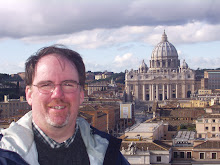The Office of Worship has received a few calls with questions regarding the use of the Sequence this coming Sunday, the Solemnity of the Body and Blood of Christ. For those who don't want to read this whole post, the quick answer is that the Sequence is optional and not required.
The Sequence has a long, rich and complicated history. It is a musical form, akin to a hymn, and was originally attached as an embellishment to the Alleluia. It is non-Biblical poetry which elaborates on a sacred theme. Perhaps the most famous sequence is "Dies Irae Dies Illa" from the Requiem Mass. The famous composers W. A. Mozart and Giuseppe Verdi have enshrined this text for ever in some of the greatest music of the western world.
The Tridentine reforms of Pope Pius V removed all but four sequences from the Roman liturgy. Four sequences are still retained in the reformed Missal promulgated by Paul VI after Vatican II, although the four are not entirely the same as those of Pope Pius. Our current missal appoints a sequence for Easter Sunday (Victimae paschali laudes / Christians praise the Paschal Victim), Pentecost (Veni Sancte Spiritus / Come Holy Spirit), the Body and Blood of Christ (Lauda Sion Salvatorem / Praise, O Zion, your Savior) and Our Lady of Sorrows (Stabat mater / At the Cross Her Station Keeping). The Missal of Pope Paul VI dropped the Dies Irae from the Mass for the Dead (Requiem Mass).
Of these four, the sequences for Easter and Pentecost are obligatory while the other two are optional. Unfortunately, all four seem to be frequently omitted. The lack of accessible music for these pieces is perhaps one of the main reasons for this. If the sequence is sung, it is done between the Second Reading and the Gospel. Today it normally is sung immediately prior to the Alleluia.
The text (and possibly the music) of the Sequence for the Solemnity of the Body and Blood of Christ was composed by Saint Thomas Aquinas at the request of Pope Urban IV when the feast was placed on the universal Roman calendar (c. 1264). If this sequence is done, there are two options: a long form and a short form. The melody is haunting but quite beautiful (click here to access a recording of the chant).
Subscribe to:
Post Comments (Atom)

Thank you, this is very helpful.
ReplyDelete